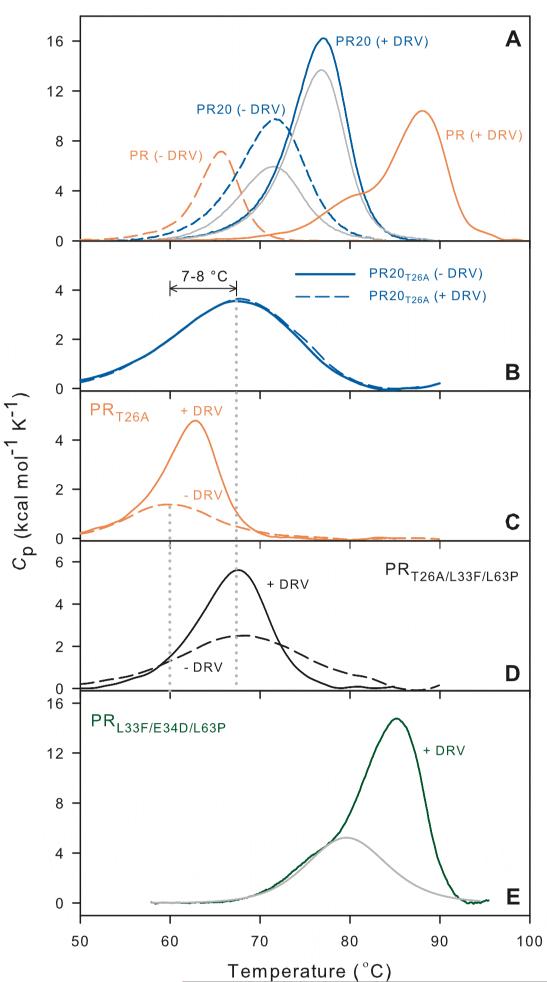Figure 5.
Differential scanning calorimetry of PR, PR20 and PRL33F/E34D/L63P dimers (A, E) and its corresponding monomers (B, C, D). Dashed and solid lines are thermal denaturation curves in the absence and presence of DRV, respectively. (A) Orange lines correspond to PR and blue to PR20. Traces shown in gray for PR20, obtained on a second scan of the DSC sample after completion of the initial scan, indicate partial reversibility of thermal melting in both the presence and absence of DRV. Data for PR, shown for comparison, are from.21 Panels B, C, and D show the effect of DRV on the thermal denaturation of PR20, PR, and PRL33F/L63P monomers bearing the T26A mutation. The absence of any effect of DRV on PR20T26A (B) indicates that this monomer likely does not form a complex with DRV. (E) Thermal denaturation of PRL33F/E34D/L63P dimer as its DRV complex (green). The curve in gray represents deconvolution of a transition with Tm 79.7 °C, analogous to that seen in the biphasic DSC plot for PR (panel A). For values of Tm and ΔTm derived from these plots see Table 1A.

